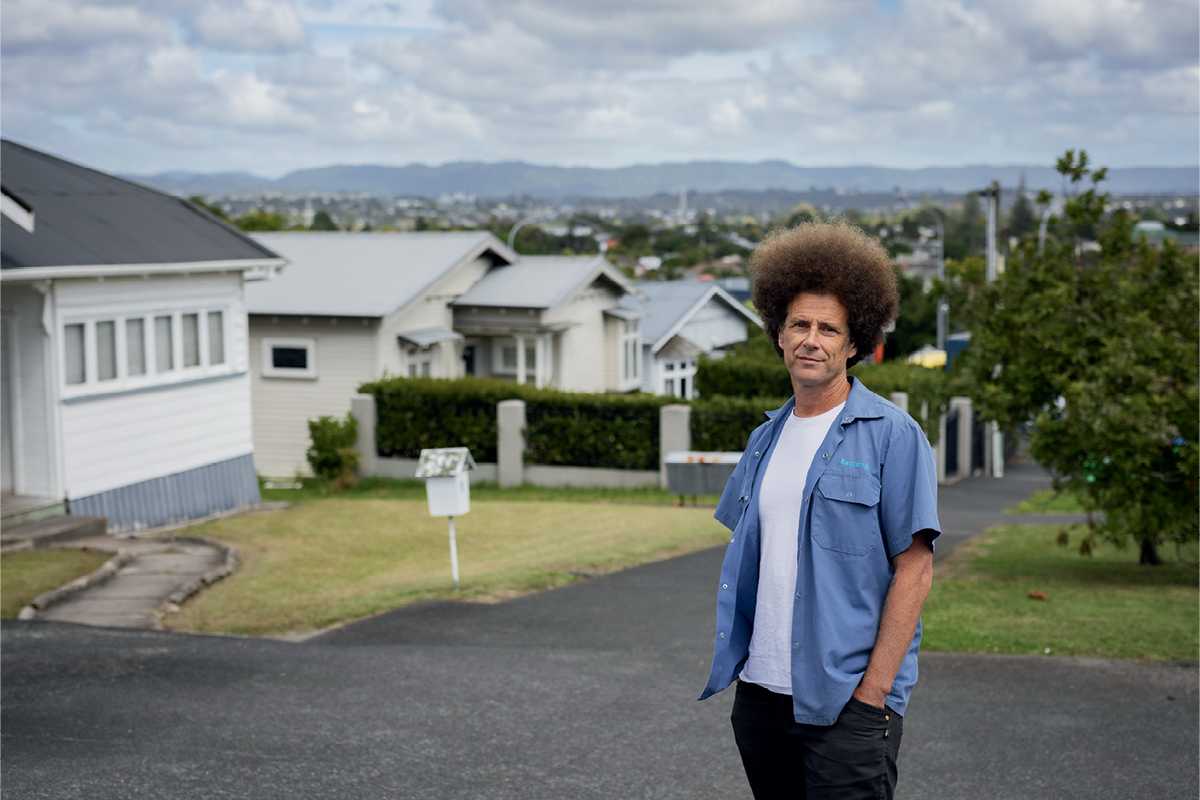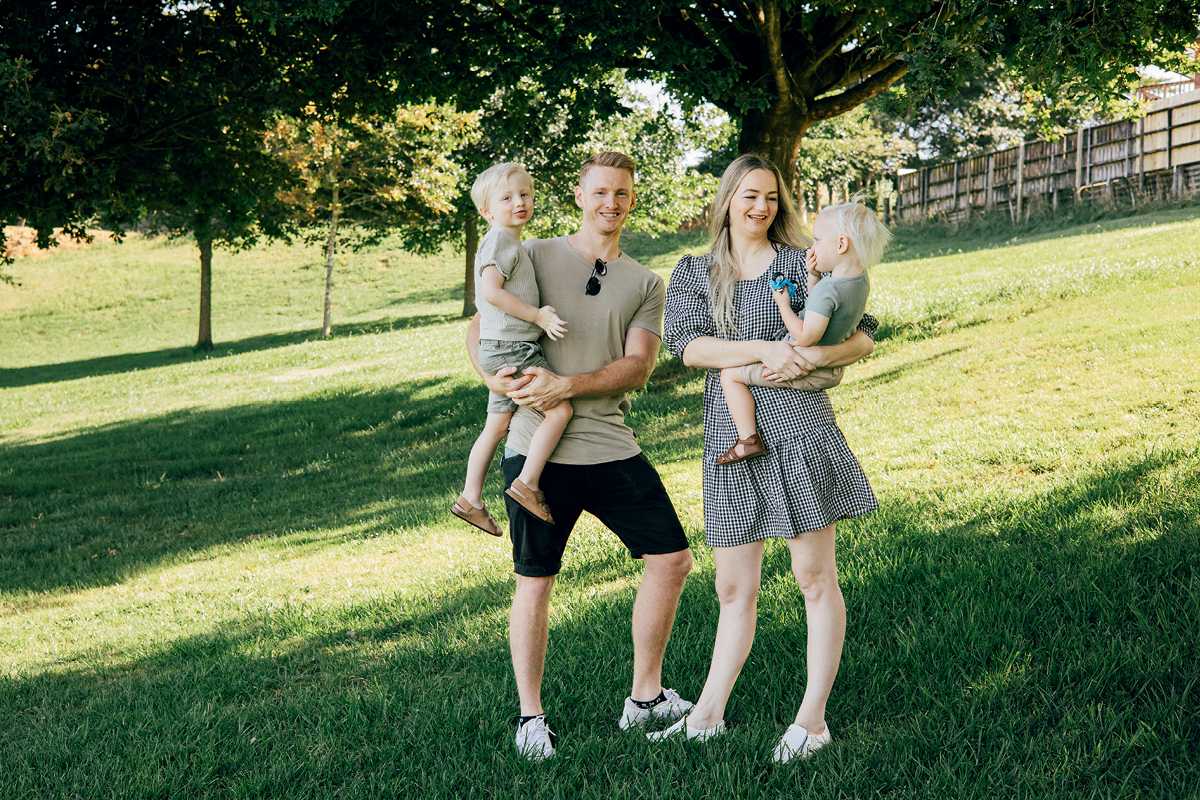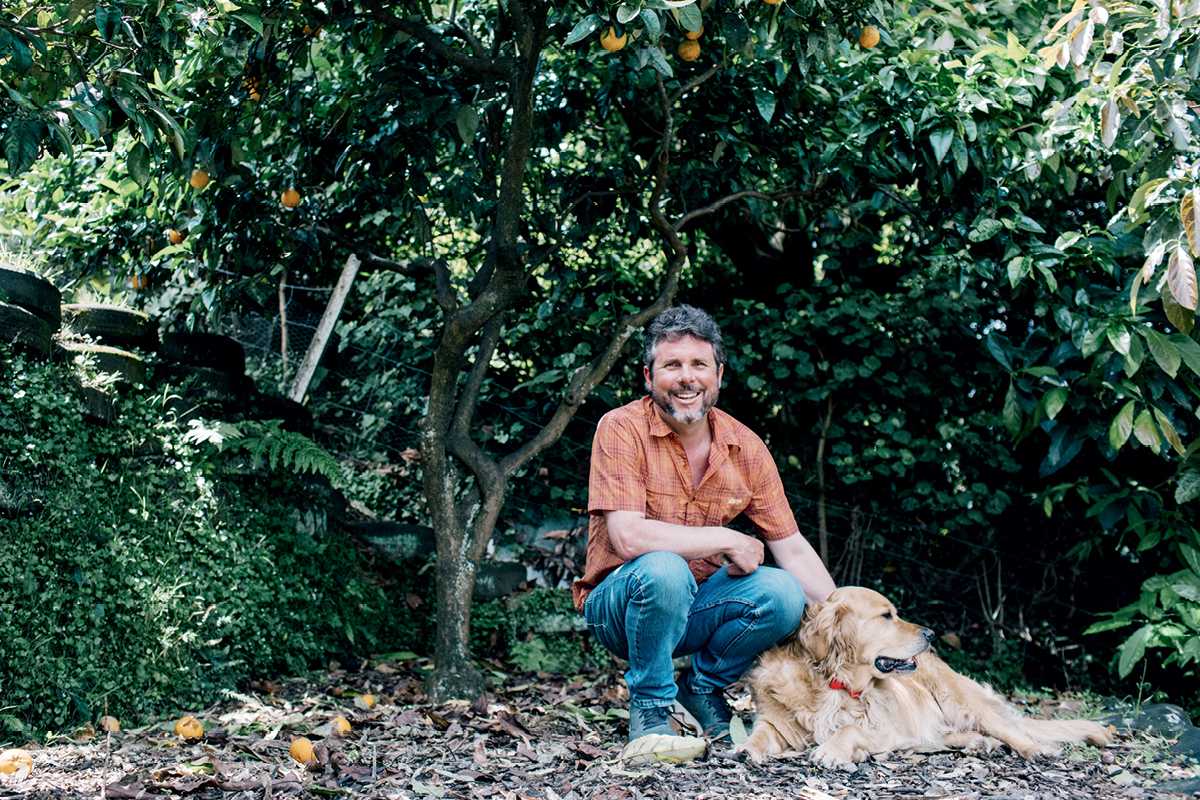
Pathway To Success
Moving from Samoa to New Zealand in her late twenties, Sieni Skelton-Richardson had a bold plan to achieve financial success, writes Joanna Jefferies. Photography by Sandra Henderson.
1 February 2021

Before Sieni Skelton-Richardson left American Samoa to pursue an education in New Zealand, she set three goals:
1) she wanted a degree, 2) she wanted to own her own home, and 3) she wanted to become a citizen. These were fairly audacious aims for a woman in her late twenties, who following high school had worked as a fish cleaner and then in administration at a tuna processing plant.
But it was when she was made redundant from her admin role and received a payout that she saw her chance to create a new pathway for herself in New Zealand. She enrolled initially in a Diploma of Business and Accounting as an international student and eventually went on to complete a Bachelor of Commerce, while flatting in South Auckland.
With a degree under her belt, and the first item ticked off her list, she set about achieving the second goal. This was particularly important to Skelton- Richardson as growing up in Samoa until she was 12, and then in American Samoa, her family had always owned their own home. She felt that home ownership gave a family security, and a centre for their community.
“For me as a mother it’s an important part of creating stability. You need to be in a home where you know the landlord is not going to turn round and sell it tomorrow.”
So, when she took herself off to the bank to apply for a mortgage and the banker kindly referred her on to a broker who specialised in property investment, she was surprised to be diverted from her initial plan.
“I always say he was like an angel in my pathway. All I wanted was a home for myself. He said, ‘What about buying a rental? You still own it.’” The broker explained to her how building a property portfolio could be a pathway to future financial security, and Skelton-Richardson decided to act on his advice.
‘I always say he was like an angel in my pathway. All I wanted was a home for myself. He said, “What about buying a rental? You still own it”’
So, rather than purchase her first home, in 2003, only four years after arriving in New Zealand, she bought a standalone home in South Auckland for just $155,500. It was the only area she knew well in New Zealand, and the entry price point was low.
The property was managed by a property manager from the beginning, as are all her investment properties, because Skelton-Richardson believes in leaving the professionals to their areas of expertise.
A year later, she bought again in South Auckland, a similar property for around $175,000. At that point she’d set herself a goal of 10 properties, one per year. But it wasn’t to be long before she would live in her own home. While in Auckland she had met her future husband, Daryl Richardson, who was originally from Taranaki. He wanted her to move with him to New Plymouth to live, but before agreeing, she gave him his orders.
“He had to buy the home first – that was the agreement.” He didn’t need asking twice, and shortly after they settled into their New Plymouth home.
But unlike the home purchase, life had other plans for Skelton-Richardson which meant her goal of a property each year was not to be. Her mother became ill and passed, and then her father too passed a couple of years later. In the meantime the couple had a daughter of their own, and things were both challenging and busy on the home front.
Back In The Game
It wasn’t until 2012 when Skelton- Richardson was ready to get back into property. She and Richardson both had employment in New Plymouth, Skelton- Richardson at a $2 Shop franchise and Richardson as a plumber. They had equity built up from the capital gains on the South Auckland properties and they decided to go full throttle, investing in the New Plymouth market.
“We started building new homes, we bought land and built two townhouses on it. We also took on properties from other investors who were doing two projects at the same time and needed to offload one so they could carry on.”
Over a period of five years they bought over ten properties, and created dual income streams by cross-leasing sections and building new townhouses.
Best Deal
One of the properties purchased at the time was a house with three flats, which Skelton-Richardson describes as her best deal. It was purchased for just $269,000 in 2013 and now rents for $745 per week. Scoring deals like this, it felt fantastic to be back in the game, but as ever, Skelton- Richardson was strategic. She wanted to diversify geographically and she could see there were greater opportunities for capital gains in Auckland.


Sieni’s Advice For Aspiring Investors
• Women who want to get a house should never lose hope. “There will always be opportunities but they are not going to be visible and they are not going to be waiting for you!”
• Make your desire known that you are in the market someone might have heard of something that is selling.
• Understand finances – manage your cashflow “what money is coming in and where it is going”.
• Understand your financial position: know your starting point – you may not be able to buy now but you need to know the steps you need to take to get there.
• Change your expectations – don’t go to the areas that are beyond reach for you.
• You should never think you can’t achieve your goals. “You need to ask how can I get there? Who can help me? Never lose hope.”
• Look for those people that are in the position you want to be in and seek their guidance.
• Buy and hold for the long term – “I’ve never sold anything yet!”
“You’ve got to branch out and explore other markets,” says Skelton-Richardson, “so if one market takes a dip …”
They ended up buying two properties in South Auckland in 2015 and two in Hamilton – a market they saw had good potential for equity gains as well as reasonable yields.
But loan-to-value ratios (LVRs) were putting the squeeze on the couple’s investment goals, and their run of purchases slowed right down when LVRs jumped to 40% for investors.
They managed to squeeze in one last purchase in New Plymouth before the Auckland lockdown, when LVRs were temporarily loosened, a two-bedroom home for $395,000, which is rented for $420/week. Now they’re “on the sidelines” as values soar and LVRs are tightened.
Giving Back
Along the way Skelton-Richardson has been sought out for advice on her incredible trajectory from low-income immigrant to property investment success. Helping others in the community is a key part of Skelton-Richardson’s philosophy and she’s always been happy to give her time to talk to others about creating their own pathway to success.
‘The goal is financial security. But for us it’s not about waiting for that one day, we try to make the most of it and enjoy ourselves along the way’
To this end, she published her first book AUALA (which means road/ pathway in Samoan) in February last year which details her own journey and gives readers advice on how to set goals, and to understand finance and the vehicle of property investment for wealth creation. It’s intended particularly for women as a tool to empower and educate, and is available on Amazon. com. In line with her desire to lift up women in the community, half of the proceeds are donated to Women’s Refuge. As a landlord, Skelton- Richardson also seeks to provide the security of tenure that many lack as renters. All her tenants have a long-term home in her rentals, as she wants the families who live there to enjoy stability.
Looking Ahead
In terms of goals, Skelton-Richardson has kicked all three of her initial objectives, and far surpassed what she could ever have imagined achieving. She says there is no particular number of properties, but the plan is to reach a particular passive income level that she and her husband are aiming for, and if an opportunity comes up to buy again they will.
“The goal is financial security and freedom. But for us it’s not about waiting for that one day. We try to make the most of it and enjoy ourselves along
the way.”
She can’t see herself stopping working, and says if there is an opportunity in the future she would like to work more with women to empower them to create their own pathway to success.



